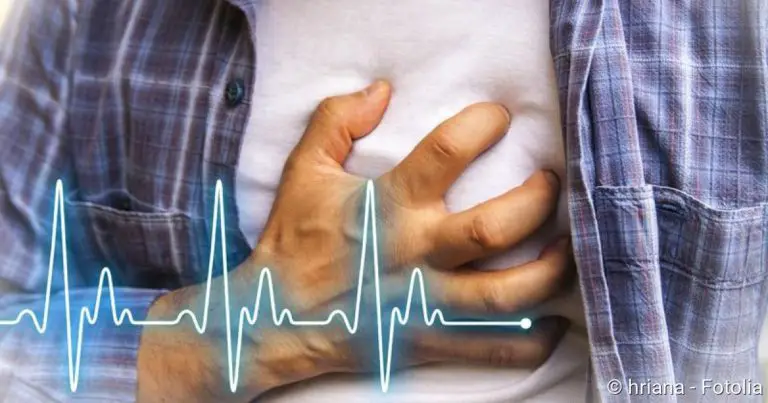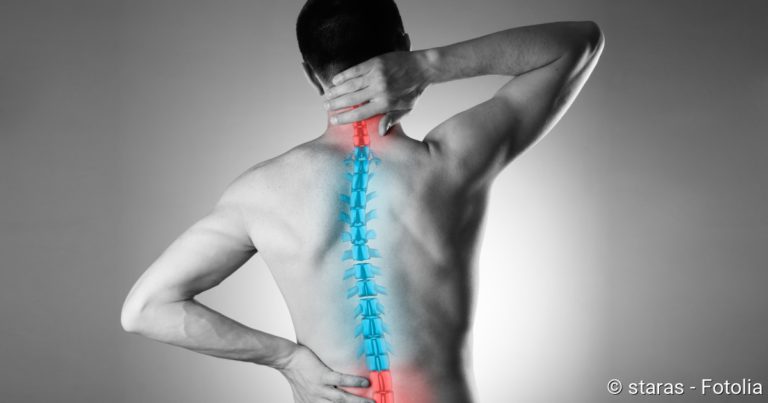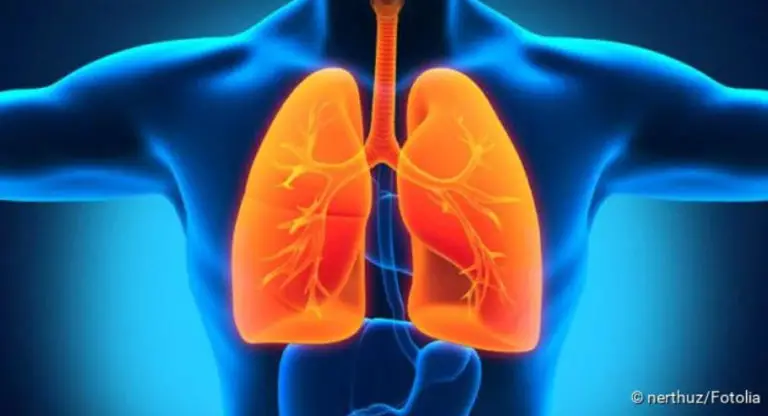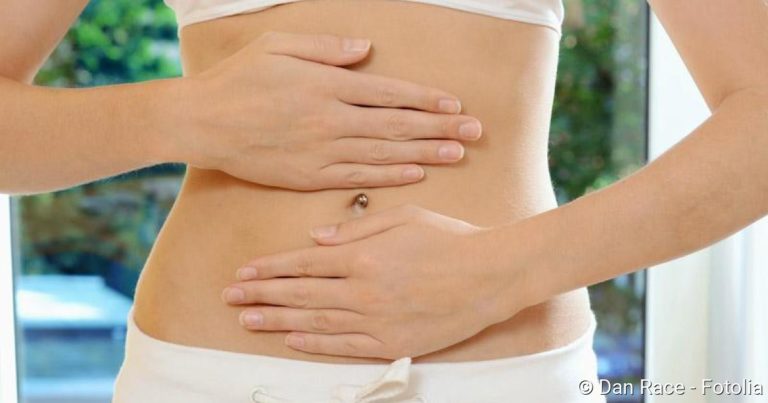Crohn’s disease: causes, symptoms, treatment, nutrition
Crohn’s disease: causes, symptoms, treatment, nutrition
Crohn’s disease is a chronic inflammation of the bowel, which usually occurs in phases. Typical symptoms are abdominal pain and severe diarrhoea. Crohn’s disease cannot be cured so far. However, the symptoms can be favourably influenced by medication and an appropriate lifestyle. Read here what Crohn’s disease is, what causes it and how to treat it.

Crohn’s disease: short overview
- Description: chronic inflammatory bowel disease
- Causes: not yet fully clarified. Possible are genetic predisposition, impaired barrier function of the intestine, autoimmune reactions, unfavourable lifestyle
- Main symptoms: cramp-like abdominal pain, diarrhoea, exhaustion, abscesses
- Treatment: cortisone, immunosuppressants, surgery, psychotherapy
- Prognosis: very different courses and degrees of severity, not curable
Crohn’s disease: description and causes
Crohn’s disease, along with ulcerative colitis, is one of the chronic inflammatory bowel diseases (CED). The main symptoms are cramp-like abdominal pain and diarrhoea. The symptoms usually occur in phases. Patients can therefore be free of symptoms for a longer period of time.
Crohn’s disease can occur throughout the entire digestive tract – from mouth to anus. However, usually only the last section of the small intestine, the large intestine or these two parts of the intestine together are affected. Healthy and diseased bowel segments can alternate. In the diseased areas not only the mucous membrane is inflamed, but all wall layers of the intestine can be affected.
The severity of Crohn’s disease varies from patient to patient. In the event of an unfavourable course, ulcers, constrictions (stenoses) or connecting passages (fistulas) to other organs are formed.
Why some people develop Crohn’s disease is still not fully understood. However, there are different hypotheses.
Lifestyle has a great influence on the course of the disease. Toxins such as nicotine and alcohol should be avoided as far as possible. In addition, do not forget to get enough exercise and deal with stress in a relaxed manner. And: Crohn’s disease causes a chronic inflammation of the intestinal mucosa. Here, nutrition plays an important role.
Officially, it is recommended that you carefully try out what is good for you. From my experience I advise to eat an anti-inflammatory diet if possible. This means completely avoiding wheat, pork and cow’s milk, as well as a low-sugar and vegetarian diet. Other anti-inflammatory foods are good oils (e.g. linseed, olive or walnut kernel oil), spices such as turmeric, cardamom or ginger, and deep-sea fish.
Inflammation and risks of Crohn’s disease: In Crohn’s disease, various sections of the digestive tract become inflamed. The last sections of the small intestine and the large intestine are most frequently affected. In the event of an unfavourable course, fistulas and constrictions (stenoses) may also develop.
Genetic changes
It is known that certain genetic changes increase the risk of Crohn’s disease. Thus, about half of the patients have mutations in the gene NOD2, which plays a role in the immune system.
Disturbed barrier function in the intestine
One possible explanation is a disturbed barrier function of the intestinal wall. On the one hand, the intestine must be permeable so that nutrients can enter the body, but on the other hand it must also prevent pathogens from entering. If this balance is upset, problems arise. For example, bacteria can nestle in the intestinal wall and provoke the immune system to violent defensive reactions.
Autoimmune reaction
Another hypothesis is that the inflammation of the intestinal wall is caused by misdirected actions of the immune system. Doctors call this an autoimmune reaction. The trigger can then be an infection, for example, to which the body’s own defences react excessively strongly.
Lifestyle
Lifestyle also influences the risk of disease and its course. Smokers are more likely to contract Crohn’s disease. Stress, in turn, can trigger new flare-ups of illness.
Crohn’s disease: symptoms
Weight loss: Due to a lack of appetite or fear of pain, those affected often do not eat enough. Due to the diarrhoea, many nutrients are also lost. This is why patients often lose a lot of weight.
Abscesses and fistulas: The inflammations can lead to the formation of encapsulated accumulations of pus (abscesses). Also connecting passages (fistulas) to other organs, into the abdominal cavity or to the outside can occur. They often occur in the anal region and are often a first indication of Crohn’s disease.
Scarring and intestinal obstruction: When the inflamed sections of the intestine heal, scars often form. In severe cases, this can lead to an intestinal obstruction (ileus), which must be operated on.
Tiredness, exhaustion, fever: Due to the inflammatory processes, patients feel tired and flabby. Often fever is added and causes a general feeling of illness.
Nutrient deficiency: The inflamed sections of the intestine are no longer able to properly absorb the food components. Additional nutrients are lost through diarrhoea. Therefore, patients often suffer from deficiency symptoms. Zinc deficiency, for example, promotes skin changes and inflammations such as aphthae in the oral mucosa. In the long term, osteoporosis also threatens due to calcium deficiency
General tendency to inflammation: Patients with ulcerative colitis more often suffer from inflammation of the joints, eyes or liver.
Chronic or intermittent
If the symptoms of Crohn’s disease persist for at least six months, it is called a chronic course. More often, however, the disease progresses in phases. The symptoms can disappear completely for a time.
Crohn’s disease: treatment
Crohn’s disease cannot yet be cured. However, the treatment can slow down the inflammatory processes, alleviate the symptoms and delay relapses. The doctor takes into account which sections of the digestive tract are inflamed and how severe the disease is.
Medication
In Crohn’s disease, the main aim is to control the inflammation and alleviate the symptoms. This is done with drugs that weaken the activity of the immune system. With certain drugs, a relapse (recurrence) over a certain period of time can also be prevented.
Corticosteroids, colloquially called cortisone, are very effective drugs that quickly reduce inflammation. The dose depends on the severity of the course. Cortisone is usually prescribed in tablet form, for example prednisone or prednisolone. An infusion may be necessary if the symptoms are severe.
Steroids affect the entire body. They should therefore not be used for long-term therapy. With long-term use, the patient often gains weight and gets a characteristic “full moon face”. Blood sugar and blood fat values also rise. In addition, the susceptibility to infections becomes higher and the risk of osteoporosis increases.
Budesonide is a cortisone derivative. It develops its effect mainly in the lower small intestine and its transition to the large intestine. It is the better choice for centres of inflammation in this area as it is better tolerated than other cortisone preparations.
Aminosalicylate is better tolerated than cortisone, but less effective. It is therefore only used for mild disease courses.
TNF antibodies such as Infliximab and Adalimumab are antibodies directed against certain inflammatory factors. They are administered under the skin in the form of an infusion or an injection. Their effect occurs comparatively quickly. But they can cause allergies. TNF antibodies are also prescribed for the prevention of a new relapse and for the long-term treatment of anal fistulas.
Ustekinumab is an active ingredient that blocks the inflammatory messengers interleukin 12 and 23 and thus reduces inflammatory reactions. The drug is prescribed when other drugs do not work sufficiently.
Antibodies against integrins (vedolizumab) must also be administered by infusion, but are well tolerated. The drug is prescribed when other drugs do not work sufficiently.
Immunosuppressants such as azathioprine, 6-mercaptopurine or methotrexate also reduce immune activity. They are used to prevent a new outbreak of disease. However, it takes at least three months for them to take effect. Sometimes the number of white blood cells is reduced under the intake, nausea and inflammation of the liver are also possible.
Acute treatment of the main symptoms: Diarrhea medication such as loperamide and antispasmodics such as butylscopalamine for abdominal pain
Treatment of anal fistulas: For anal fistulas, antibiotics such as cipofloxacin and metronidazole are prescribed for a short period of time. In the long term, TNF antibodies can be used.
| Low to moderate thrust | Heavy thrust | Prevention of new relapses | |
| Corticosteroids (oral) | Standard therapy | Standard therapy | unsuitable |
| Corticosteroids (intravenous) | No | Yes | No |
| Budenoside | For mild small intestinal infestation | No | No |
| TNF antibody | No | Yes | When immunosuppressants fail |
| Vedolizumab | No | Yes | Yes |
| Ustekinumab | No | Yes | Yes |
| Immunosuppressive drugs | No | No | Yes |
Crohn’s disease: operations
If treatment with medication is not sufficient, surgery may be necessary. In the context of such interventions
- constricted areas dilated with a balloon
- Fistulas closed
- Abscesses removed
- Bowel obstructions removed
- severely diseased bowel segments removed
Crohn’s disease: nutrition
There is no generally valid diet for Crohn’s disease. Overall, however, Crohn’s disease patients should rather spare their gastrointestinal tract.
- It is better to eat several small meals than a few large ones!
- Do not eat too hot or too cold!
- Eat and not too sour and not too spicy!
Try it out
Flatulent foods, raw foods, fatty or sweet foods, but also coffee, fruit juices and alcohol can stress the digestive tract. What is well tolerated varies from person to person. Try whatever suits you.
Observe incompatibilities
Many Crohn’s disease patients suffer from intolerances to lactose, gluten or fructose. These have a very strengthening effect on an already susceptible intestine. If this is the case, they should strictly avoid them.
Eating rich in nutrients
Less nutrients enter the body via the damaged intestine. Make sure that you eat a particularly nutritious diet to compensate for this.
Nutrition during a push
The stomach and intestines need special care during a push. Most patients then tolerate a light, low-fibre diet. Pureeing food can also have a relieving effect. In the event of a severe relapse, temporary artificial feeding via drip may be useful to calm the digestive tract.
Psychotherapy
Persistent bladder problems, abdominal pain, listlessness – in severe cases Crohn’s disease massively impairs a patient’s quality of life and self-esteem. Some develop a depression or anxiety disorder. Psychotherapy can help to cope better with the stresses and strains and to develop a positive attitude towards life and a consolidated self-image despite the illness.
Within the framework of cognitive behavioural therapy, the patient questions and corrects negative thought patterns and practices new behaviours. Since stress can also worsen the symptoms, patients learn strategies that help them avoid unnecessary psychological stress.
Stress Reduction
Patients with Crohn’s disease benefit from learning a relaxation technique. This helps to reduce stress, which can have an unfavourable influence on the course of the disease. Helpful methods are, for example:
Crohn’s disease: examinations and diagnosis
Several examinations are necessary for the diagnosis of Crohn’s disease. At the beginning there is the detailed anamnesis (medical history), which also includes the family medical history.
In the course of a physical examination, the attending physician palpates the lower abdomen and checks for pressure pain. He also examines the oral cavity and anus for signs of disease such as fistulas.
Colonoscopy: The most important examination for the diagnosis of Crohn’s disease is a colonoscopy (colo-ileoscopy). The doctor inserts a flexible instrument with a camera (endoscope) into the intestine to view the mucous membrane.
The instrument is also equipped with fine pliers. The doctor can use them to take tissue samples (biopsies), which are then examined in the laboratory for pathological changes.
Constrictions (stenoses) and fistulas, in which pathological connections are formed in the abdominal region, to other organs or to the outside, are also recognised in this way and, if possible, treated equally.
Gastroscopy: In gastroscopy, an endoscope is inserted through the oral cavity. This allows the doctor to see the stomach and duodenum.
Ultrasound: With an ultrasound device, inflammatory thickening of the intestinal walls, constrictions, fistulas and abscesses can be detected. However, mucous membrane changes can only be found with the endoscope. An ultrasound examination not only helps with the diagnosis. Since it is less stressful for the patient, the doctor can also use it to regularly check the course of the disease.
Magnetic resonance tomography (MRT) and computer tomography (CT): With these examinations the doctor can see changes in parts of the intestine that cannot be seen during colonoscopy.
Blood analysis: In the course of a blood test, the patient is tested primarily for a certain protein, the so-called CRP. An increased value indicates an inflammation. In most cases of Crohn’s disease, a complete blood count is also prepared.
Crohn’s disease: course of disease and prognosis
There is no complete cure for Crohn’s disease. The course of the disease varies greatly from patient to patient. While some are completely free of symptoms for a long time or have only mild symptoms, other patients experience recurrent, severe phases of illness. Overall, the probability that a Crohn’s disease patient will require surgery is high.
However, you can do something yourself to reduce the severity of the symptoms and prolong the symptom-free phases:
- Take the prescribed medication consistently
- Get a good night’s sleep,
- Relax regularly
- Eat what you feel is good for you
- Move around a lot
Crohn’s disease patients also have a slightly higher risk of developing colorectal cancer. This can be minimized with regular examinations for early detection.
Overall, the life expectancy of people with Crohn’s disease is normal, although Crohn’s disease is not curable.






